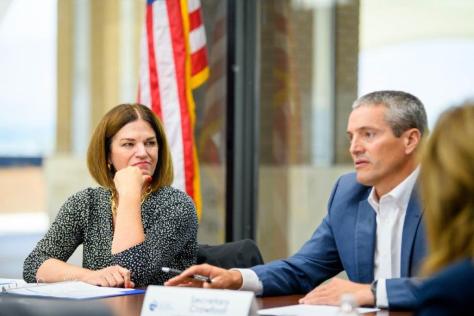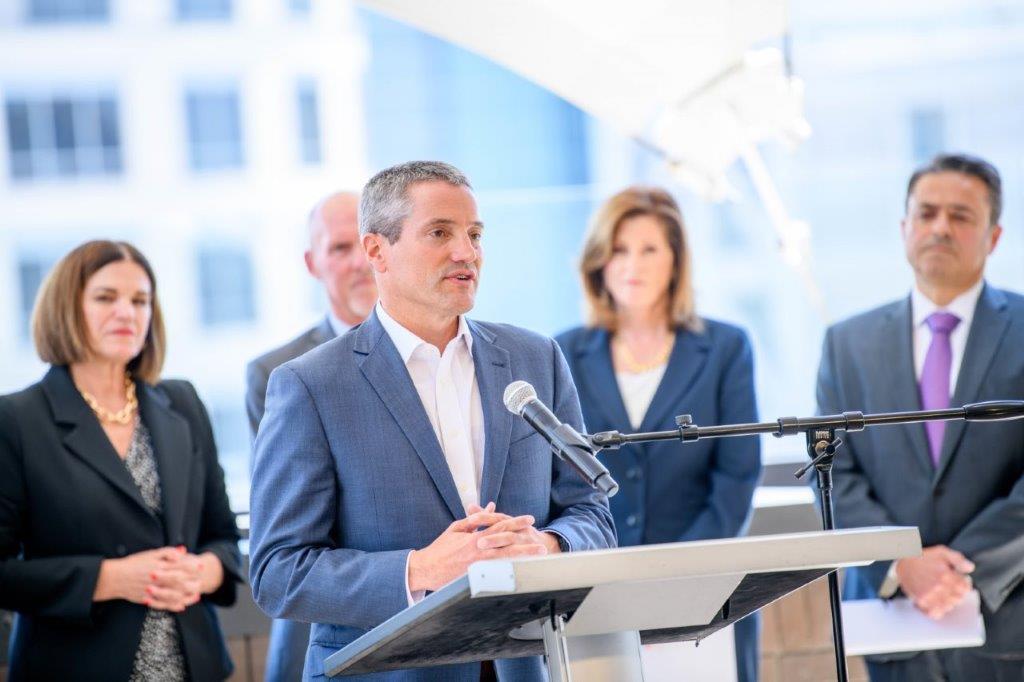Mayor Patricia Lock Dawson, Inland Water Managers Emphasize Need for Long-Term Approach to Managing State Water Resources
Published: 8/1/2022
FOR IMMEDIATE RELEASE:
Aug. 1, 2022
Contact:
Phil Pitchford
Public Information Officer
951-826-5975
Mayor Patricia Lock Dawson, Inland Water Managers Emphasize Need for Long-Term Approach to Managing State Water Resources
Local leaders dialogue with Wade Crowfoot, Secretary, California Natural Resources Agency
RIVERSIDE, Calif. – The statewide drought, made worse this time by climate change, emphasizes the need for a long-term approach to managing the state’s water resources, Mayor Patricia Lock Dawson and a group of local water managers said Monday in a roundtable discussion with Wade Crowfoot, Secretary of the California Natural Resources Agency.
“As we are all aware, our state faces a historic drought,” Lock Dawson said. “Water conservation efforts are critical to maintaining our sustainability as a region and as a state. One thing is clear -- we need collaboration and education to save our water together.”
The issue is especially critical because Riverside County is only about 50 percent built-out and already is the fastest-growing county in the state, local leaders said. That potential for additional growth in the face of drought will require additional measures, such as the reduction of non-functioning turf, i.e., grass that only gets walked on when it is being mowed, water managers said.
Crowfoot congratulated water managers for offering the highest rebates in the state for turf removal while also emphasizing the need to continue watering the trees that cool our landscape.
“Water agencies in this region have really been at the vanguard of sustainability,” Crowfoot said. “But we all have to be smarter in how we use water. We want to continue to be your partner in helping your customers continue to make progress.”
Crowfoot said water agencies around the state have learned valuable lessons from previous droughts, which he said are “becoming more pernicious.” For example, as the climate warms, California receives less of the snowpack it relies upon for water, and when the snowpack melts, more of the water either is absorbed by a parched landscape or evaporates in warmer temperatures.
“The work that is being done across Riverside County is remarkable in building our resilience to drought,” Crowfoot said. “This drought is presenting more challenging conditions than ever.”
Managing worsening drought is becoming more complex because previous droughts already have required reductions in water use, said Craig Miller, General Manager of Western Municipal Water District. As residents and business owners have reduced their water consumption, it becomes increasingly difficult to find new ways to meet future goals for conservation.
“We are coming together to solve this water crisis in California by making water supply investments the State’s top priority, so we are not in this position every couple of years,” Miller said.”
Todd Corbin, General Manager of Riverside Public Utilities, warned that the nexus between water, energy and climate is particularly troublesome. For example, depleted water supplies around the state can make it more difficult to generate hydroelectric power that helps reduce greenhouse gas emissions.
“Everything is connected together,” Corbin said. “We can’t solve one problem while ignoring another problem.”
For the latest information and resources regarding COVID-19 -- www.RiversideCA.gov/COVID-19




